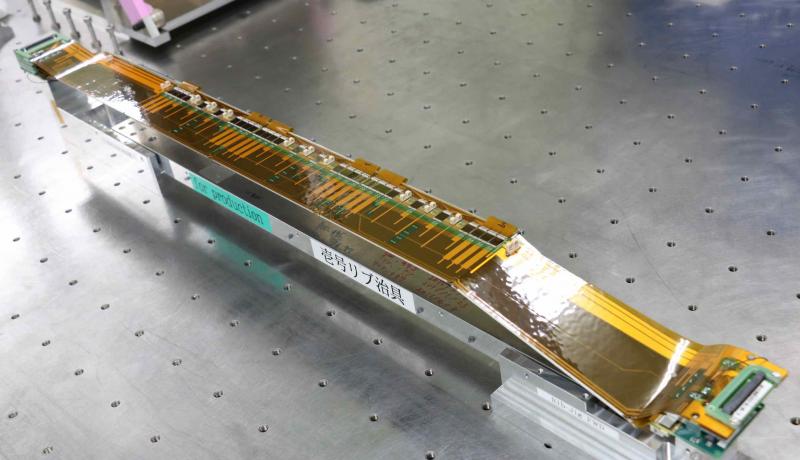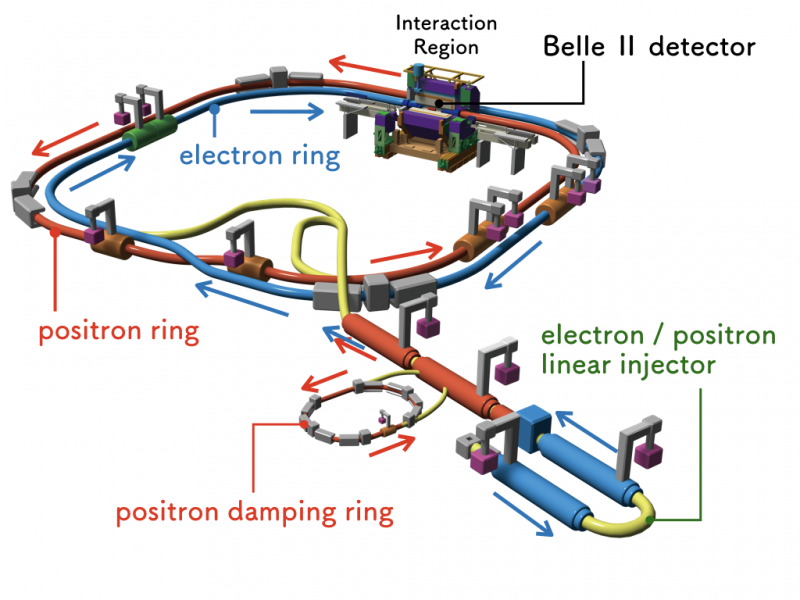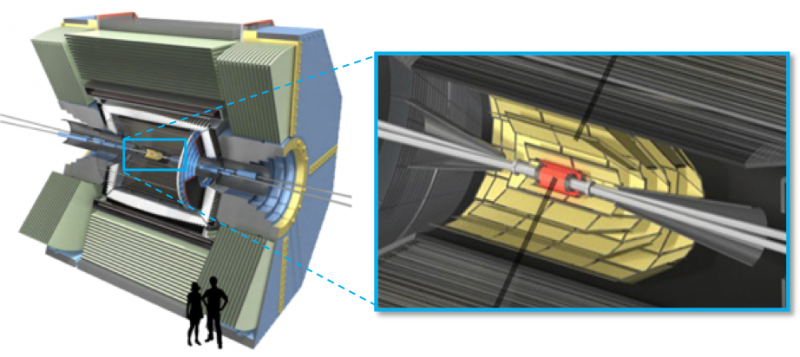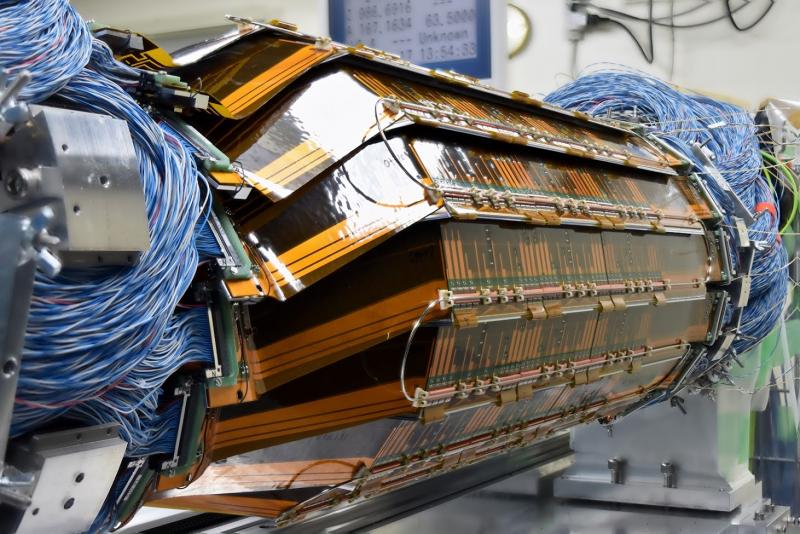May 28, 2018
Kavli Institute for the Physics and Mathematics of the Universe (Kavli IPMU)

Shaped like a lantern, an international team of researchers has announced they finished building the outermost shell of the Silicon Vertex Detector (SVD) on May 24 after six years of work. The completed SVD will be placed inside one of Japan’s biggest particle accelerators later this year.
The SVD currently under construction is part of the Belle II experiment, hosted by the High Energy Accelerator Research Organization (KEK) in Tsukuba, north of Tokyo, which aims to search for physics beyond the Standard Model of particle physics. While the Standard Model has helped explain the behavior of elementary particles in the Universe, it does little to explain other equally significant phenomena that have shaped the Universe, including the nature of dark matter. If scientists are to fully understand how the Universe was created, they must find a new theory of particle physics.

The SVD will help in this area with its ability to pinpoint precise locations of particles with 35 micrometer precision. Researchers will be analyzing the particles created by colliding particles inside KEK’s newly-upgraded particle accelerator SuperKEKB. If any undiscovered particles exist, they should appear in locations unpredicted by current theories.
The high performance of the detector is due to its innovative design and to the high mechanical precision achieved by the researchers who built it, including the team at the Kavli Institute for the Physics and Mathematics of the Universe (Kavli IPMU), who have been building the outermost layer of the SVD since 2012.
Made up of 16 ladders overlapping one another to create its signature lantern shape, each ladder acts as a sensor to determine the location of a particle. The ladders are built using trapezoidal or rectangular silicon sensors, which act as semiconductor, and has 512 strips cut along its front side, and 768 strips cut along its backside. When a particle passes through the SVD, its location is recorded by an electric signal released from the strips closest to the contact point.

While the design sounds simple enough, the team at Kavli IPMU, lead by Associate Professor Takeo Higuchi, have had to overcome a mountain of challenges since construction began, like developing and building jigs specifically tailored for ladder assembly, establishing procedures to control glue viscosity, and developing a precise electrical wire bonding procedure that could assure high efficiency and pull force.

By 2016 the team had managed to create one prototype ladder, but further strict protocol had to be introduced to produce the remaining 15 SVD ladders and three spares. This included increased use of machine equipment to maintain high quality and minimize human error, the development of a 100-page manual, several check points spread across the development period to ensure any mistakes could be identified quickly, detailed record-taking of when and where building parts were bought and shipped, and training researchers to become SVD ladder construction professionals.
The SVD is scheduled to be placed inside SuperKEKB in November this year with the hope of beginning data analysis by February 2019.
The fourth shell of the SVD was developed by the following members: Kavli IPMU Associate Professor Takeo Higuchi, Kavli IPMU Project Researchers Tomoko Morii, Changwoo Joo, Kavli IPMU Project Academic Support Specialist Antonio Paladino, and staffs and graduate students from the University of Tokyo School of Science, KEK, Tokyo University of Science, Tohoku University, Niigata University, the Nippon Dental University, Kyungpook National University, Seoul National University, Istituto Nazionale di Fisica Nucleare.

Related stories
SuperKEKB accelerator kicks into a new gear
Research contact
Takeo Higuchi
Associate Professor
Kavli Institute for the Physics and Mathematics of the Universe,
University of Tokyo
TEL:04-7136-6541
E-mail:takeo.higuchi_at_ipmu.jp
* please change _at_ to @
Media contact
Motoko Kakubayashi
Press officer
Kavli Institute for the Physics and Mathematics of the Universe,
University of Tokyo
Tel: +81-(0)4-7136-5980
E-mail:press_at_ipmu.jp
* please change _at_ to @






